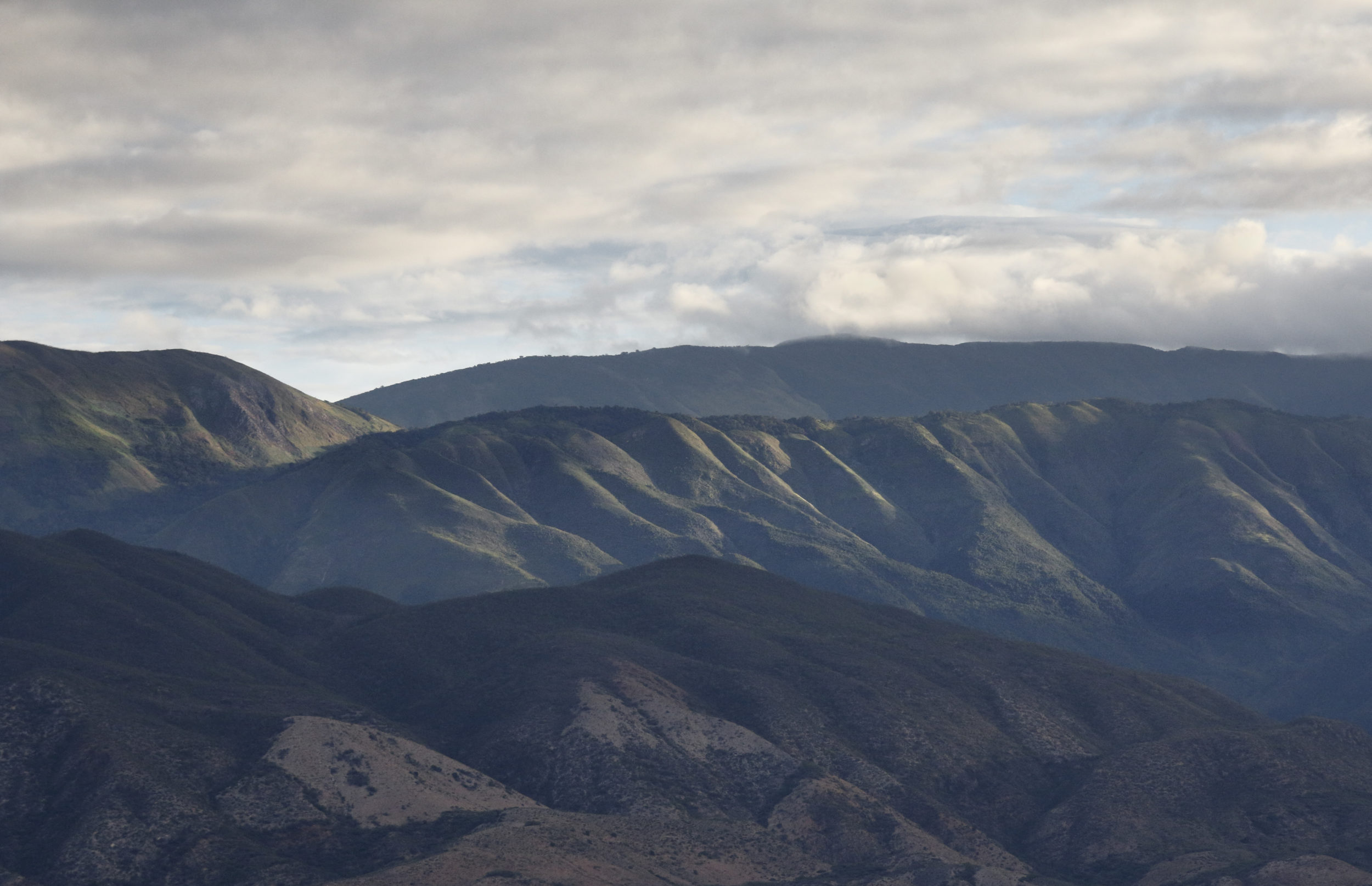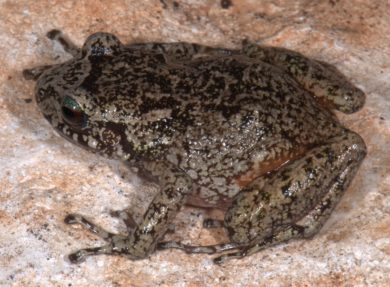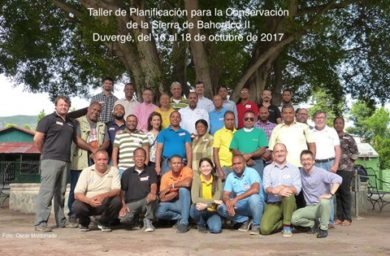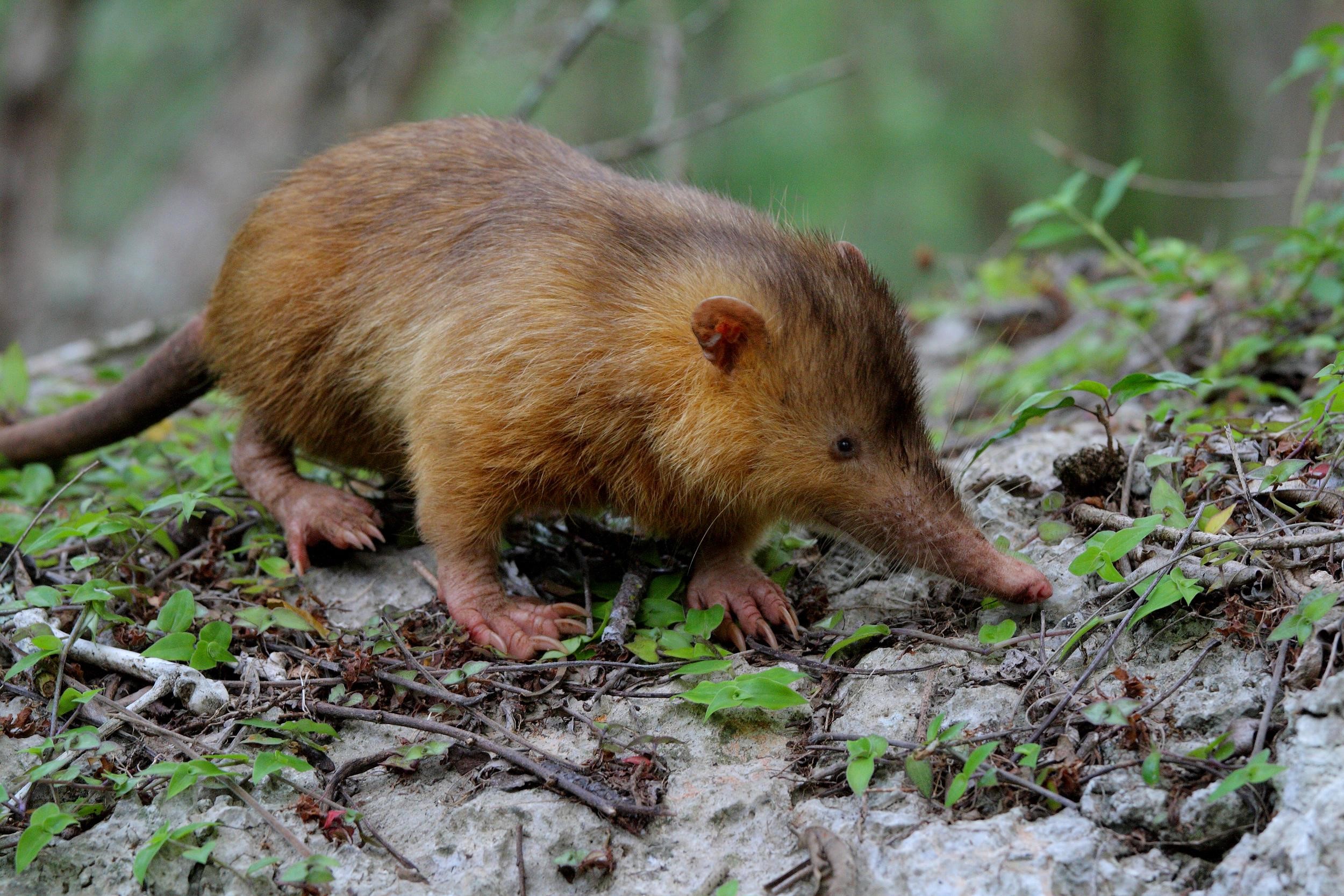
Sierra de Bahoruco from Lago Enriquillo. / © Eladio Fernandez
NORWICH, VT – The Vermont Center for Ecostudies (VCE) announced today finalization of the Strategic Conservation Plan for Sierra de Bahoruco National Park in the Dominican Republic. The plan, which VCE helped to both fund and facilitate, aims to halt illegal deforestation and implement collaborative management of the park’s unique forested habitats for the benefit of plants, wildlife, and humans alike.
More than two decades ago, VCE biologists discovered that Sierra de Bahoruco National Park provides critical wintering habitat for Bicknell’s Thrush, a highly at-risk species with an estimated worldwide population of less than 100,000 individuals—precariously low for a migratory songbird. Recently, investigations by long-time Dominican conservation partner Grupo Jaragua revealed extensive deforestation in the park caused by unsanctioned agricultural operations and other illegal activities. Left unchecked, these threats will seriously degrade Bicknell’s Thrush habitat and could lead to the extinction of many endemic species. Continued loss of forest cover could also diminish or eliminate the main source of water for human consumption in communities surrounding the park.

The southern pastel frog (Eleutherodactylus leoncei), one of 12 amphibian species endemic to Sierra de Bahoruco National Park.
“It was clear, based on work done by Grupo Jaragua and VCE, that the park was in great peril,” said John Lloyd, VCE’s Director of Science. “The question was: what could we do about it?”
Recognizing that any effort to reform management of the park would need support of the government and local communities, VCE and Grupo Jaragua decided to pursue a collaborative approach.
In 2016, VCE secured funding via a US Fish and Wildlife Service Neotropical Migratory Bird Conservation Act grant to bring together stakeholders to create a strategic conservation plan for Sierra de Bahoruco National Park. Following the Open Standards for the Practice of Conservation, Grupo Jaragua and the Dominican Republic’s Ministry of the Environment and Natural Resources hosted multi-day stakeholder workshops in two primary towns bordering the park.
Through these workshops, participants identified threats to conservation targets and developed specific projects to address those threats. For VCE’s Lloyd, who attended the workshops, the inclusive, participatory nature of the process was a strength. “One of the most satisfying things about this process was seeing these incredibly diverse groups come together to work out solutions to a bunch of really difficult problems,” he said.

Participants in the final workshop in the town of Duverge.
“This wasn’t just a collection of scientists and government officials deciding the future of the park; everyone in the community had a chance to participate, whether they were a beekeeper, farmer, priest, community activist, or business leader.”
Key threats identified by the group included deforestation for agriculture—specifically commercial avocado production at higher elevations and slash-and-burn farming at lower elevations—and unsustainable logging for firewood, charcoal production, and extraction of essential oils. Although the plan focuses largely on protecting the park’s resident flora and fauna, Lloyd notes that implementing the plan will benefit all species: “The conservation actions called for in this plan, such as protecting cloud forests, will benefit every species that lives in the park, including migratory species like Bicknell’s Thrush, too.”

Hispaniolan Solendon, an endemic mammal that lives within Sierra de Bahoruco National Park. Photo courtesy of Miguel A. Landestoy.
With the plan now complete, attention has turned to implementing projects that address the most pressing threats. Priority actions identified in the plan include:
- Eliminate unlawful land uses within the park and improve law-enforcement capacity.
- Improve wastewater treatment in communities around the park and limit agricultural runoff.
- Promote sustainable agriculture and agroforestry outside the park.
- Improve wildland fire-fighting capacity.
- Improve local capacity to implement science-based land management and ecological restoration.
- Control invasive species, such as pigs and rats.
Implementing this far-reaching plan is estimated to cost $5 million USD, with funding to be sought from Dominican and international sources.
